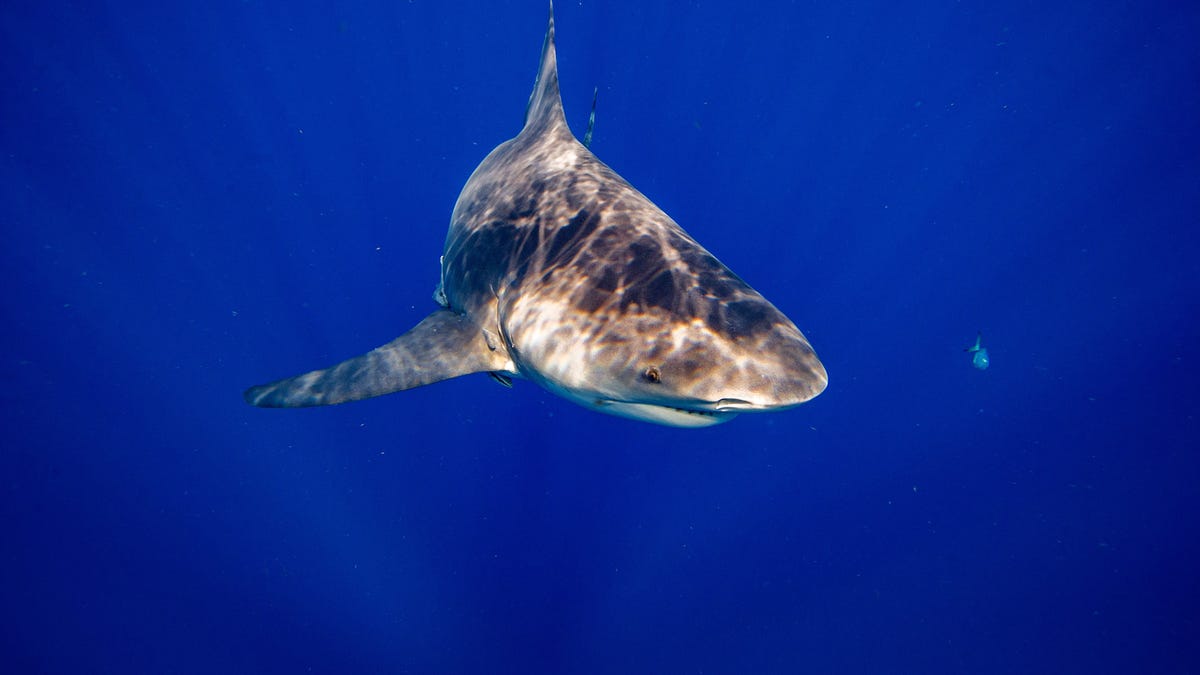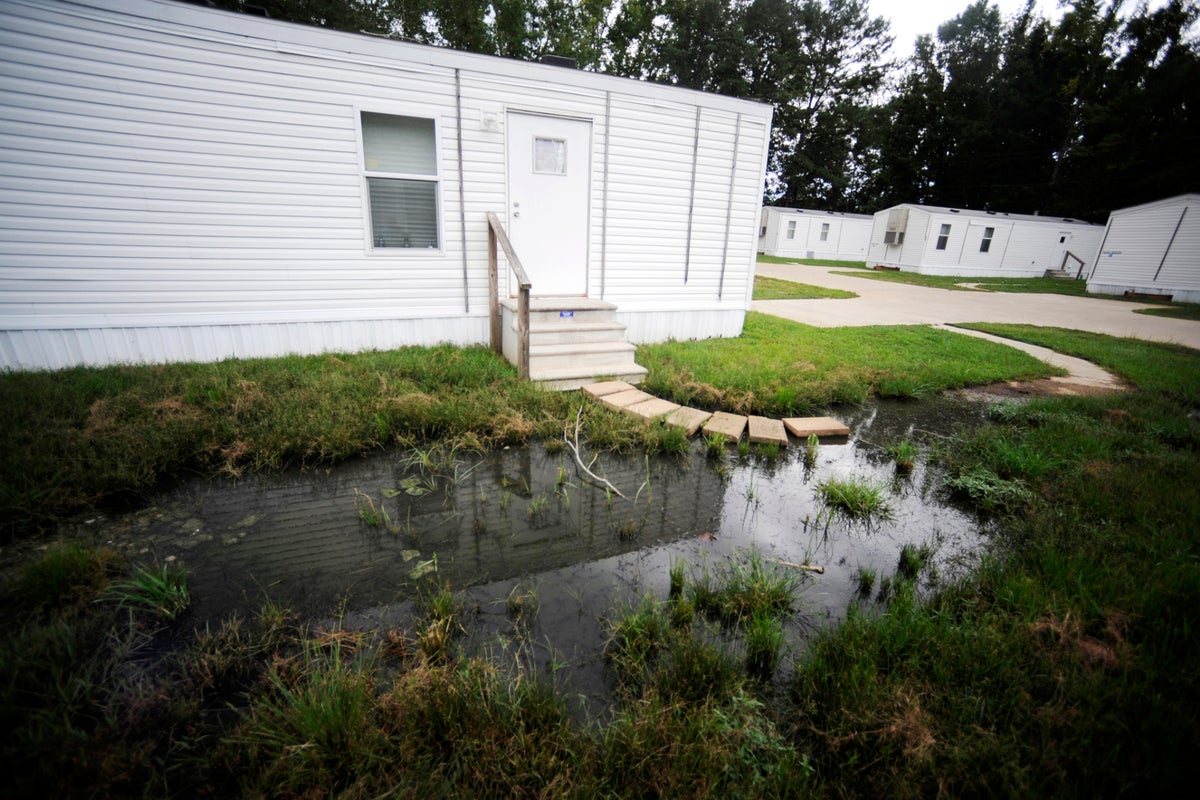California
Surfer injured in apparent shark attack at Pacifica beach

PACIFICA – A surfer was injured in an apparent shark attack Friday afternoon in Pacifica, police said.
The incident happened around 3:45 p.m. at Linda Mar Beach, the Pacifica Police Department said in a statement. Officers and North County Fire Authority firefighters arrived to find a 52-year-old man suffering from an injury to his lower leg.
The man told officers he was bitten while surfing. He did not see what bit him and could not confirm if it was a shark, police said.
The man was taken to a hospital to be treated for his injury, which was not considered life-threatening.
The incident follows two others in recent months along the Northern California coast.
On Oct. 1, the U.S. Coast Guard received reports that a swimmer was attacked by a shark and pulled under water at Wildcat Beach near Point Reyes. Authorities searched for the swimmer, identified as a 52-year-old Felix Louis N’jai, but did not find him.
A kayaker was also attacked by a shark at Bean Hollow State Beach in San Mateo County on Aug. 22. No injuries were reported in that encounter.
Excluding the most recent incident at Linda Mar Beach, there have been 211 shark attacks and incidents – 15 of them resulting in fatalities – off the California coast since 1950, according to the California Department of Fish and Wildlife.
Anyone with information related to the incident in Pacifica can contact the police department at 650-738-7314.

California
Southern California Edison lays out $925 million plan to rebuild after LA wildfires

California
Texas oil company fined $18 million for unapproved work along California coast

SANTA BARBARA, Calif. — In an action cheered by state environmentalists, the California Coastal Commission has voted to fine a Texas-based oil firm $18 million for failing to obtain necessary permits and reviews in its controversial push to revive oil production off the Gaviota Coast.
After hours of public comment Thursday, the commission found that Sable Offshore Corp. has for months violated the California Coastal Act by repairing and upgrading oil pipelines near Santa Barbara without commission approval.
In addition to the $18-million fine, commissioners ordered the company to halt all pipeline development and restore lands where environmental damage has occurred.
“The Coastal Act is the law, the law … put in place by a vote of the people,” Commissioner Meaghan Harmon said. “Sable’s refusal, in a very real sense, is a subversion of the will of the people of the state of California.”
An anti-Sable shirt worn by an attendee at a California Coastal Commission hearing to consider sanctions for the Texas-based oil company trying to restart drilling on Santa Barbara’s coast.
(Michael Owen Baker / For The Times)
The decision marks a significant escalation in the showdown between coastal authorities and Sable officials, who claim the commission has overstepped its authority. The action also comes at a time when the Trump administration is actively encouraging oil and gas production in stark contrast to California’s clean-energy and climate-focused goals.
Sable insists that it has already obtained necessary work approval from the County of Santa Barbara, and that commission approval was necessary only when the pipeline infrastructure was first proposed decades ago.
It wasn’t immediately clear how the Houston-based company would respond to the commission’s action.
“Sable is considering all options regarding its compliance with these orders,” read a prepared statement from Steve Rusch, Sable’s vice president of environmental and governmental affairs. “We respectfully have the right to disagree with the Commission’s decision and to seek independent clarification.”
Ultimately, the matter may be end up in court. In February, Sable sued the Coastal Commission claiming it lacks the authority to oversee its work.
On Thursday, Rusch called the commission’s demands part of an “arbitrary permitting process,” and said the company had worked with Coastal Commission staff for months in attempt to address their concerns. Still, Rusch said his company is “dedicated to restarting project operations in a safe and efficient manner.”
Commissioners voted unanimously to issue the cease-and-desist order — which would stop work until Sable obtained commission approval — as well as the order to restore damaged lands. However, the commission voted 9 to 2 in favor of the fine — the largest it has ever levied.
The hearing drew hundreds of people, including Sable employees and supporters and scores of environmental activists, many wearing “Don’t Enable Sable” T-shirts.
“We’re at a critical crossroads,” said Maureen Ellenberger, chair of the Sierra Club’s Santa Barbara and Ventura chapter. “In the 1970s, Californians fought to protect our coastal zone — 50 years later we’re still fighting. The California coast shouldn’t be for sale.”

Santa Barbara Middle School students wait in line to speak during a California Coastal Commission hearing to consider sanctions for the Texas-based oil company trying to restart drilling on Santa Barbara’s coast.
(Michael Owen Baker / For The Times)
At one point, a stream of 20 Santa Barbara Middle School students testified back-to-back, a few barely reaching the microphone. “None of us should be here right now — we should all be at school, but we are here because we care,” said 14-year-old Ethan Maday, a ninth-grader who helped organize his classmates’ trip to the commission hearing.
Santa Barbara has long been an environmentally conscious community, due in part to a history of major oil spills in the area. The largest spill, which occurred in 1969, released an estimated 3 million gallons of oil and inspired multiple environmental protection laws.
Sable hopes to reactivate the so-called Santa Ynez Unit, a collection of three offshore oil platforms in federal waters. The Hondo, Harmony and Heritage platforms are all connected to the Las Flores pipeline system and associated processing facility.
It was that network of oil lines that suffered a massive spill in 2015, when the Santa Ynez unit was owned by another company. That spill occurred when a corroded pipeline ruptured and released an estimated 140,000 gallons of crude near Refugio State Beach. Sable’s current work is intended to repair and upgrade those lines.
At Thursday’s hearing, Sable supporters insisted the upgrades would make the pipeline network more reliable than ever.
Mai Lindsey, a contractor who works on Sable’s leak detection system, said she found it “unfair” how the commission was asserting itself in their work.
“Are you in your lane for enforcing this?” Lindsey asked.
She said people need to understand that focusing on previous spills is no longer relevant, given how technology in her industry has drastically changed: “We learn and we improve,” she said.
Steve Balkcom, a contractor for Sable who lives in Orange County, said he’s worked on pipelines for four decades and he has no doubt that this one will be among the safest. He chalked up the controversy to a “not in my backyard” attitude.
“I know the pipeline can be safe,” Balkcom said.
Sable has argued that it can could proceed with its corrosion repair work under the pipeline’s original permits from the 1980s. The company contends such permits are still relevant because its work is only repairing and maintaining an existing pipeline, not constructing new infrastructure.
The Coastal Commission rejected that idea Thursday. Showing several photos of Sable’s ongoing pipeline work, Lisa Haage, the commission’s chief of enforcement, called Sable’s work “extensive in both its scale and the resources impacted.”
Commission staff have also argued the current work is far from identical from original permits, noting that recent requirements from the state fire marshal mandate new standards to respond to corrosive tendencies on the pipeline.
“Not only did they do work in sensitive habitats and without sufficient environmental protections and during times that sensitive species were at risk, but they also refused to comply with orders issued to them to address those issues,” Haage said at the hearing.
In a statement of defense, however, Sable said this project will “meet more stringent environmental and safety requirements than any other pipeline in the state.”

Carpinteria resident Jessica Norris holds a sign in an overflow room during the California Coastal Commission hearing.
(Michael Owen Baker / For The Times)
The company estimates that when the Santa Ynez Unit is fully online, it could produce an estimated 28,000 barrels of oil a day, according to an investor presentation, while also generating $5 million a year in new taxes for the county and an additional 300 jobs. Sable anticipates restarting offshore oil production in the second quarter this year, but the company acknowledges that some regulatory and oversight hurdles remain.
Most notably, its restart plan must still be approved by the state fire marshal, though several other parts are under review by other state agencies, including state parks and the State Water Resources Control Board.
Commissioners on Thursday were grateful for the community input, including from Sable employees, whom Harmon called “hard-working people” not responsible or at fault for the Coastal Act violations.
“Coastal development permits make work safe,” Harmon said. “They make work safer not just for our environment … they make work safer for the people who are doing the job.”
She urged Sable to work cooperatively with the commission.
“We can have good, well-paying jobs and we can protect and preserve our coast,” Harmon said.
But some environmentalists said Thursday’s findings should further call into question Sable’s larger project.
“How can we trust this company to operate responsibly, safely, or in compliance with any regulations or laws?” Alex Katz, executive director of the Santa Barbara-based Environmental Defense Center, said in a statement. “California can’t afford another disaster on our coast.”
California
‘Demonic’ sea lions that attacked people off California coast were sickened by toxic substance: scientists

They were flippin’ poisoned!
The horde of “demonic” sea lions that attacked people off the California coast in recent weeks lashed out because they were sickened by mind-warping toxic algae, scientists have discovered.
The normally adorable ocean critters — who mauled a surfer and bit a swimmer — were reduced to a zombie-like state due to a neurological flare-up that caused confusion, seizures and panic, marine experts said.
“These animals are reacting to the fact that they are sick,” John Warner, CEO Marine Mammal Care Center in Los Angeles, told BBC News.
“They’re disoriented, and most likely, most of them are having seizures, and so their senses are not all fully functional as they normally would and they’re acting out of fear.”
The center tested hundreds of sea lions and found they suffered from the so-called “domoic acid toxicosis” from gobbling down fish exposed to the toxic bloom near the southern California shoreline.
At least 195 sea lions with the illness have been admitted to the center since late March, said Warner, who said they can recover with anti-seizure medications and sedation.
But the brain-bending condition often makes sea lions flip out with rage — like in the case of Rj LaMendola, who was dragged from his surfboard by a sea lion on March 21.
“It looked possessed,” LaMendola, 40, wrote later in Facebook post. “This creature looked like nothing I’d ever seen—its expression was feral, almost demonic, devoid of the curiosity or playfulness.”
He escaped from the blubber-bellied beast with a bloody gash on his left butt cheek and was rushed to a hospital.
“It felt like I was being hunted,” he said.“Today, I endured the most harrowing and traumatic experience of my 20 years of surfing.”
Nine days later, Phoebe Beltran, 15, was doing swim test in Long Beach to become a lifeguard when a sea lion repeatedly sunk its teeth into her right arm.
“I was just so scared, so shocked, but I still felt the immense pain on my arms, like, over and over again,” the teen told ABC 7.
She was hospitalized but didn’t require advanced treatment after the unprovoked attack.
Others have reported bizarre behavior and aggressive sea lions as experts said attacks by the animals are “on the rise.”
The toxic algae bloom sprouted earlier than normal this year and has spread for roughly 370 miles along Southern California coastline.
Exposed sea lions often become lethargic or in a comatose state then turn aggressive as they recover from the poisoning, Warner said.
“Their behavior changes from what we’re used to, to something more unpredictable,” Warner said.
“If they’re still aggressive or not foraging properly, it tells us their brains aren’t functioning the way they should,” he said.
-

 News1 week ago
News1 week agoSupreme Court Rules Against Makers of Flavored Vapes Popular With Teens
-

 News1 week ago
News1 week agoNYC Mayor Eric Adams' corruption case is dismissed
-

 Technology1 week ago
Technology1 week agoHere’s how you can preorder the Nintendo Switch 2 (or try to)
-

 News1 week ago
News1 week agoTrump to Pick Ohio Solicitor General, T. Elliot Gaiser, for Justice Dept. Legal Post
-

 Sports1 week ago
Sports1 week agoDeion Sanders defied doubters and returns to Colorado with a $10M per year deal. What’s next?
-

 World1 week ago
World1 week ago‘A historic moment’: Donald Trump unveils sweeping ‘reciprocal’ tariffs
-

 Politics1 week ago
Politics1 week agoFBI flooded with record number of new agent applications in Kash Patel's first month leading bureau
-

 World1 week ago
World1 week agoCommission denies singling out NGOs in green funding row

















